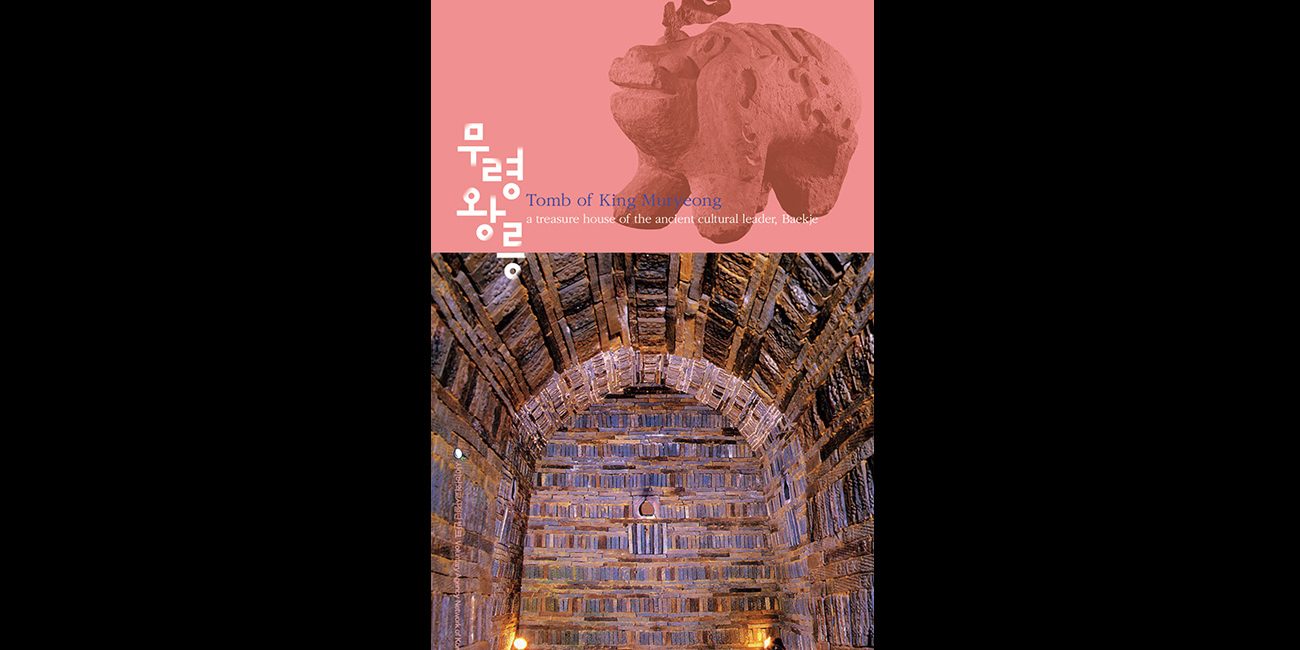In July 1971, there was an astonishing discovery in the town of Songsanri in Gongju of Chungcheongnamdo Province.
During repair work on another tomb’ drainage system, the tomb of Baekje’s King Muryeong (reign 501 ~ 523) was found. Memorial tablets at the entrance indicated that the tomb was built for King Muryeong and his queen. It is a rare example of an ancient tomb whose occupants are identified. The tomb remained intact and contained more than 2,900 pieces of over 100 kinds of artifacts. Among them, 17 items were designated as Korean national treasures. Artifacts excavated include golden coffin ornaments, a large sword with dragon and phoenix-shaped decorations, and a silver bracelet with detailed information engraved inside.
Muryeong came to the throne in a turbulent period after Baekje (18 BC-AD 660) lost its capital to Goguryeo (37 BC-AD 668) and moved to Ungjin (present-day Gongju). He made his best effort to restoring stability and the economy. He undertook many political reforms and actively engaged in trade with other countries, such as China and Japan. His tomb’s artifacts provide a glimpse of Baekje’s international relationships.
The Tomb of King Muryeong is built of stacked bricks. Its distinctive brick chamber reveals Baekje’s cultural exchange with southern Chinese dynasties. The chamber is constructed with rectangular bricks stacked in layers of four rows and one column. Its brick walls are elaborately decorated with lotus patterns. Its marvelous arched ceiling is created using trapezoid-shaped bricks in its center. Baekje’s brick masons carved words on the bricks to mark their exact locations in the wall. In addition, Chinese ceramics and coffins made of Japanese umbrella trees in the tomb are another indication of Baekje’s openness and international trade.
